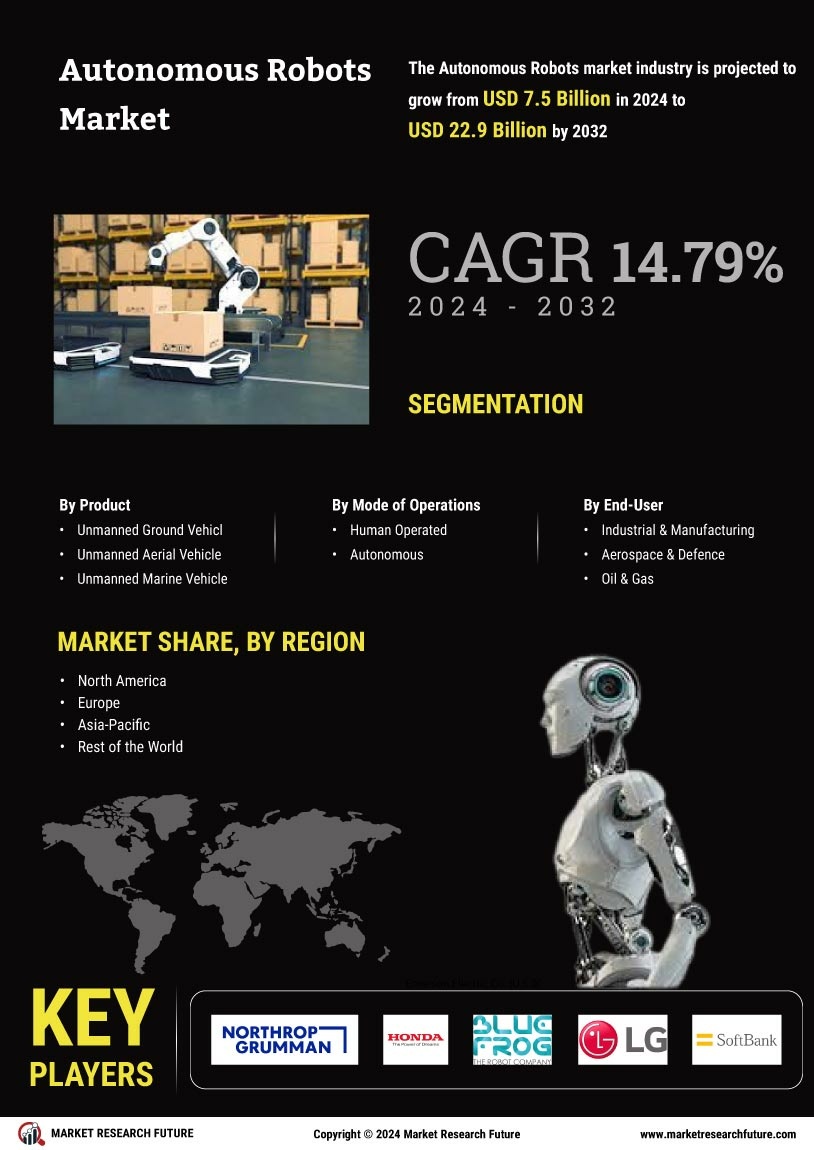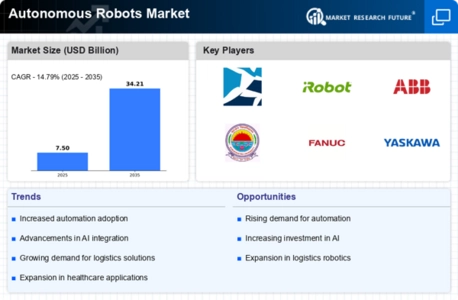Growing Demand for Automation
The Autonomous Robots Market is witnessing a growing demand for automation across various sectors, including manufacturing, logistics, and agriculture. Companies are increasingly recognizing the benefits of automating repetitive tasks to enhance productivity and reduce operational costs. For example, the use of autonomous robots in warehouses has been shown to improve inventory management and streamline supply chain operations. Market data suggests that the automation sector is expected to expand significantly, with a notable increase in investments in robotic solutions. This trend indicates a shift towards more automated processes, positioning the Autonomous Robots Market for continued growth as businesses seek to optimize their operations.
Technological Advancements in Robotics
The Autonomous Robots Market is experiencing rapid technological advancements that enhance the capabilities of robots. Innovations in artificial intelligence, machine learning, and sensor technologies are driving the development of more sophisticated autonomous systems. For instance, the integration of advanced algorithms allows robots to perform complex tasks with greater efficiency and accuracy. According to recent data, the market for AI in robotics is projected to grow significantly, indicating a strong demand for intelligent autonomous solutions. These advancements not only improve operational efficiency but also reduce human intervention, making robots more appealing to various sectors. As industries increasingly adopt these technologies, the Autonomous Robots Market is likely to witness substantial growth.
Increased Focus on Safety and Efficiency
The Autonomous Robots Market is benefiting from an increased focus on safety and efficiency in various applications. Industries are prioritizing the implementation of autonomous systems to minimize workplace accidents and enhance operational efficiency. For instance, autonomous robots are being deployed in hazardous environments, such as construction sites and chemical plants, where human presence poses risks. Data indicates that the adoption of these robots can lead to a significant reduction in workplace injuries. As safety regulations become more stringent, the demand for autonomous robots that can operate safely and efficiently is likely to rise, further propelling the growth of the Autonomous Robots Market.
Expansion of E-commerce and Delivery Services
The Autonomous Robots Market is experiencing growth driven by the expansion of e-commerce and delivery services. As online shopping continues to rise, companies are increasingly turning to autonomous robots for last-mile delivery solutions. These robots offer a cost-effective and efficient means of transporting goods directly to consumers. Market analysis reveals that the demand for autonomous delivery robots is expected to surge, with many retailers investing in this technology to enhance customer experience and streamline logistics. This trend not only reflects changing consumer behaviors but also indicates a broader shift towards automation in the retail sector, positioning the Autonomous Robots Market for significant advancements.
Rising Investment in Research and Development
The Autonomous Robots Market is witnessing a surge in investment in research and development, which is crucial for driving innovation and enhancing robot capabilities. Companies and governments are allocating substantial resources to explore new technologies and applications for autonomous systems. This investment is fostering collaboration between academia and industry, leading to breakthroughs in robotics. Data suggests that R&D spending in the robotics sector is on the rise, indicating a commitment to advancing autonomous technologies. As these investments yield new solutions and improvements, the Autonomous Robots Market is likely to benefit from enhanced product offerings and increased market competitiveness.


.webp)
.webp)
.webp)
.webp)
.webp)
.webp)








Leave a Comment